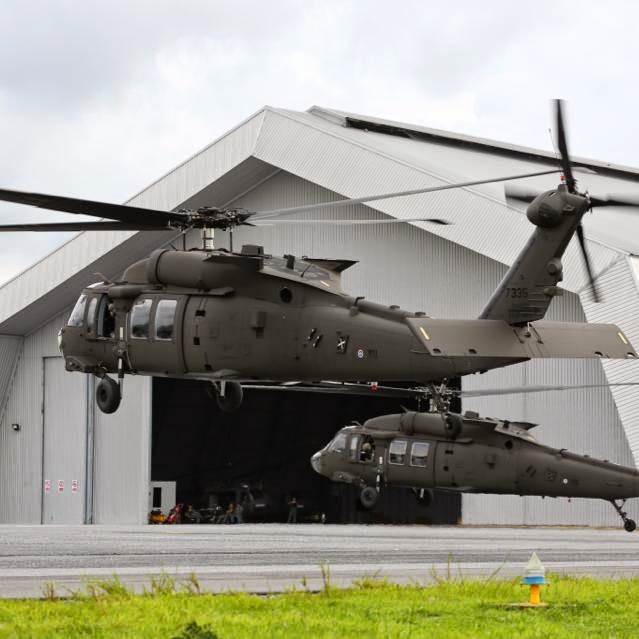Grasping the Skies: UH 60 Helicopter Upkeep Checklist
Grasping the Skies: UH 60 Helicopter Upkeep Checklist
Blog Article
Comprehending the Mechanics and Design Behind Uh 60 Helicopters
The UH-60 helicopter, generally known as the Black Hawk, stands as a peak of modern-day rotorcraft modern technology, personifying a mix of robust engineering and complex mechanics. From its beginning to its existing versions, the evolution of this aircraft showcases a blend of development and usefulness. As we peel back the layers of the UH-60's design, a globe of intricate systems and thorough engineering emerges. Understanding the auto mechanics and engineering behind this functional aircraft unveils a realm where precision meets power, and where each element plays an important function in achieving flight.
History of UH-60 Helicopters
The history of UH-60 helicopters traces back to the late 1970s when the United States Military looked for a versatile and innovative utility helicopter to change its aging fleet. In feedback to this need, the Sikorsky Aircraft Company established the UH-60 Black Hawk helicopter. Introduced in 1979, the UH-60 swiftly came to be a staple in military operations as a result of its remarkable capacities.
The UH-60 was designed to master a selection of goals, consisting of troop transport, clinical evacuation, digital warfare, and unique procedures. Its capacity to adjust to various duties made it a valuable asset to the U.S. uh 60. Military and other military pressures around the world
Throughout the years, the UH-60 system has gone through numerous upgrades and variants to enhance its performance and equal advancing goal demands. These helicopters have seen comprehensive solution in problems such as the Gulf Battle, Afghanistan, and Iraq, showcasing their dependability and versatility in diverse functional environments. The UH-60's abundant history is a testament to its long-lasting legacy as a top utility helicopter.

Engine and Power Solutions
Making use of sophisticated propulsion modern technology, UH-60 helicopters are equipped with innovative engine and power systems to make sure optimum efficiency and dependability in a variety of operational scenarios. The UH-60, generally referred to as the Black Hawk, is powered by 2 General Electric T700-GE-701D engines, each with the ability of supplying up to 1,940 shaft horse power. These turboshaft engines offer the necessary drive for the helicopter to perform its objectives properly, including army transport, clinical evacuation, and combat assistance.

Blades System and The Rules Of Aerodynamics
Exactly how do the rotor system and aerodynamics of UH-60 helicopters contribute to their operational efficiency and flight abilities? The blades system of the UH-60 helicopter plays a critical role in offering lift and propulsion.
The rules of aerodynamics also play an essential duty in the efficiency of UH-60 helicopters. The streamlined body and rotor blade layout lower drag, allowing the helicopter to accomplish higher rates and far better fuel efficiency. The wind resistant layout of the UH-60 also contributes to its capacity to operate in diverse ecological problems, including hot temperatures and high altitudes.
Avionics and Flight Control Systems

In its detailed control with the rotor system and aerodynamics of UH-60 helicopters, the avionics and trip control systems develop an essential network of modern technologies shaping the airplane's functional capabilities. In the UH-60, these systems consist of electronic displays, communication YOURURL.com radios, General practitioner navigation, weather radar, and auto-pilot systems.
The flight control systems of the UH-60 are accountable for translating the pilot's inputs right into the ideal changes to the blades system, ensuring secure flight and ability to move. These systems are composed of hydraulic actuators, servos, and computer systems that interact to regulate the tail and primary rotors, along with other trip control surfaces. By exactly handling the helicopter's trip characteristics, these systems enable pilots to do a vast array of objectives, from transportation and search-and-rescue to fight operations, with accuracy and self-confidence.
Function and Applications in Air Travel
Avionics systems in UH-60 helicopters incorporate an array of electronic systems that help in navigation, interaction, monitoring, and regulating various aircraft functions. These systems consist of digital display screens, auto-pilot systems, interaction radios, General practitioner navigation devices, and climate radar. Additionally, these systems integrate safety attributes such as autopilot settings, surface awareness warning systems, and security augmentation systems to enhance the general safety and security and functional abilities of the UH-60 helicopters in different goals, consisting of army transport, medical discharge, search and rescue, and airborne firefighting.
Final Thought
To conclude, the UH-60 helicopter is a versatile airplane with an abundant history and progressed design. Its engine and power systems, blades system, aerodynamics, avionics, and flight control systems all work with each other to make it a reliable and dependable maker. The UH-60's function and applications in aeronautics read here are substantial, varying from armed forces operations to look and save goals. Its proceeded advancement and use show its significance in the field of aviation (uh 60).
In its intricate coordination with the rotor system and the rules of aerodynamics of UH-60 helicopters, the avionics and flight control systems form an important network of modern technologies forming the airplane's functional abilities.The flight control systems of the UH-60 are liable for equating the pilot's inputs moved here right into the appropriate adjustments to the rotor system, ensuring secure flight and ability to move. Avionics systems in UH-60 helicopters incorporate an array of digital systems that help in navigating, communication, tracking, and managing different aircraft functions. Furthermore, these systems include security features such as autopilot modes, surface recognition advising systems, and stability enhancement systems to improve the overall safety and operational capabilities of the UH-60 helicopters in various goals, consisting of army transport, medical discharge, search and rescue, and aerial firefighting.
Its engine and power systems, blades system, aerodynamics, avionics, and flight control systems all work together to make it a effective and reliable device.
Report this page